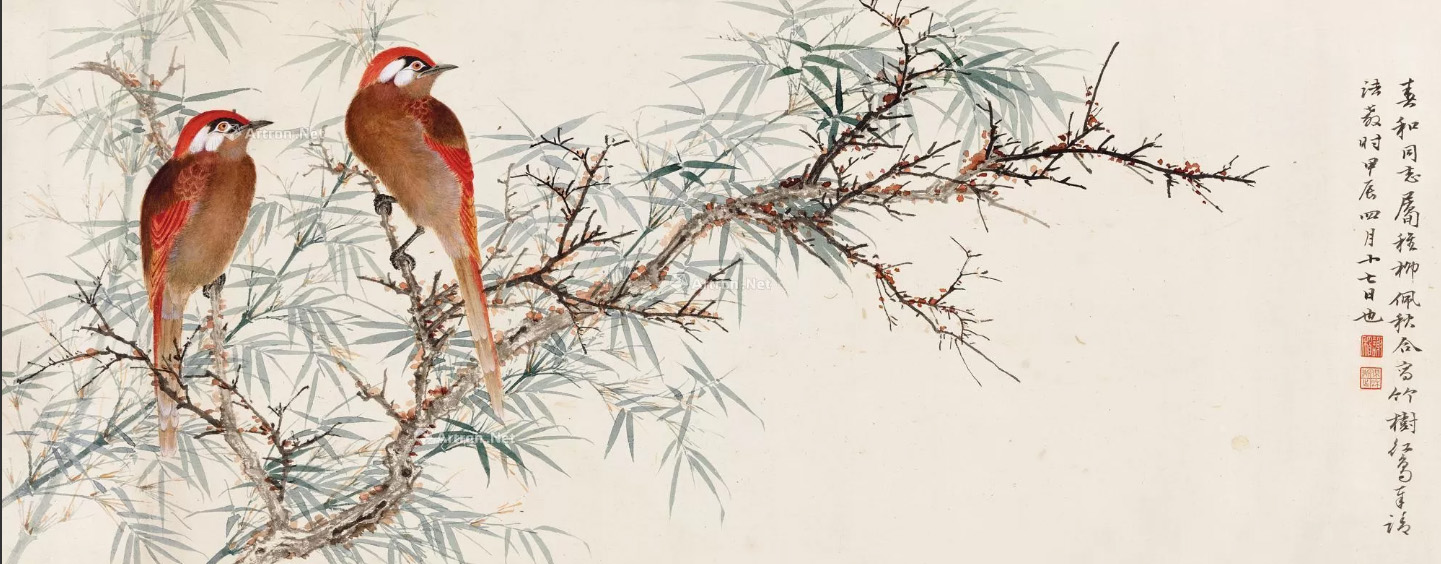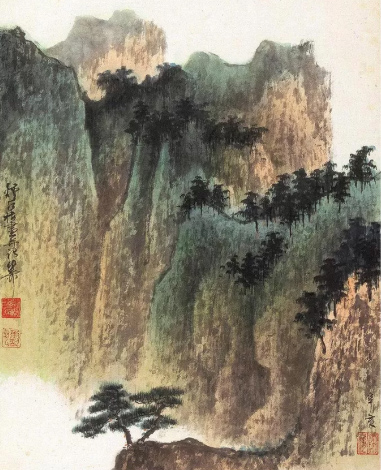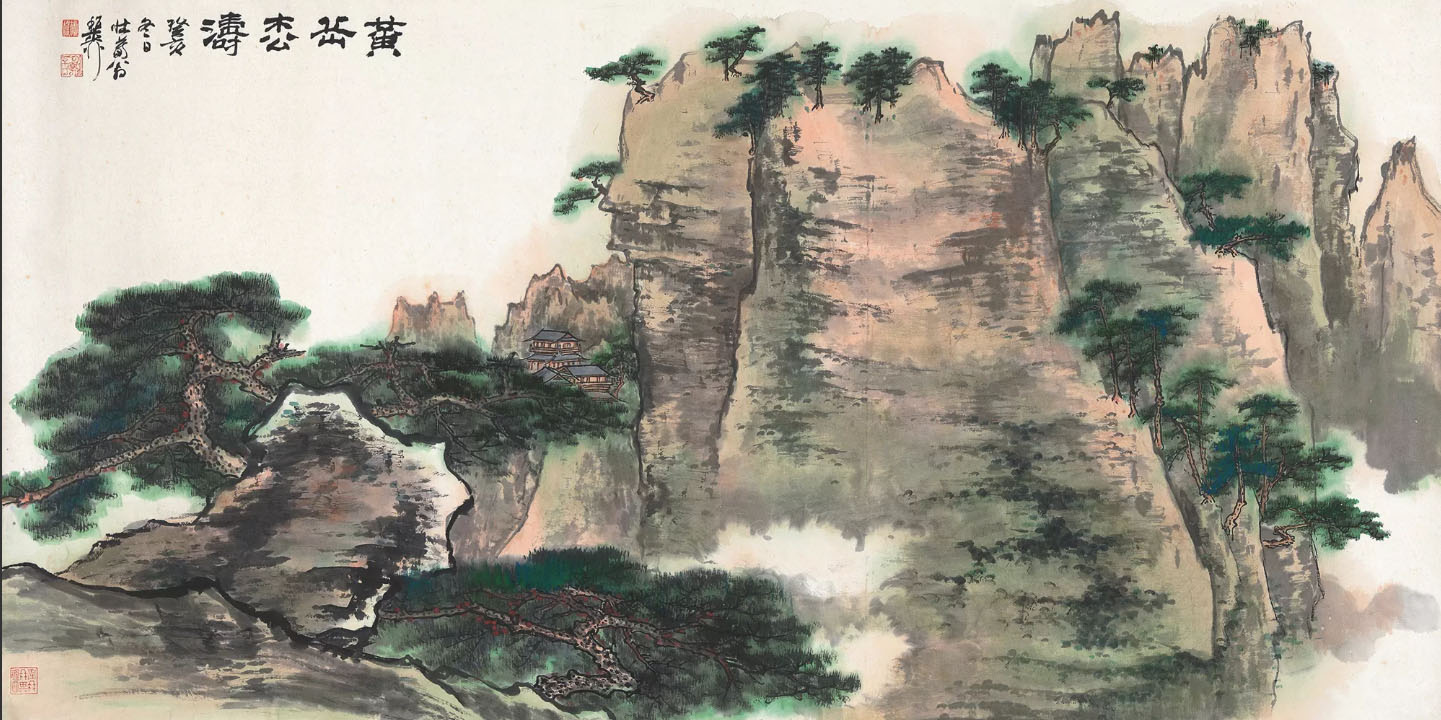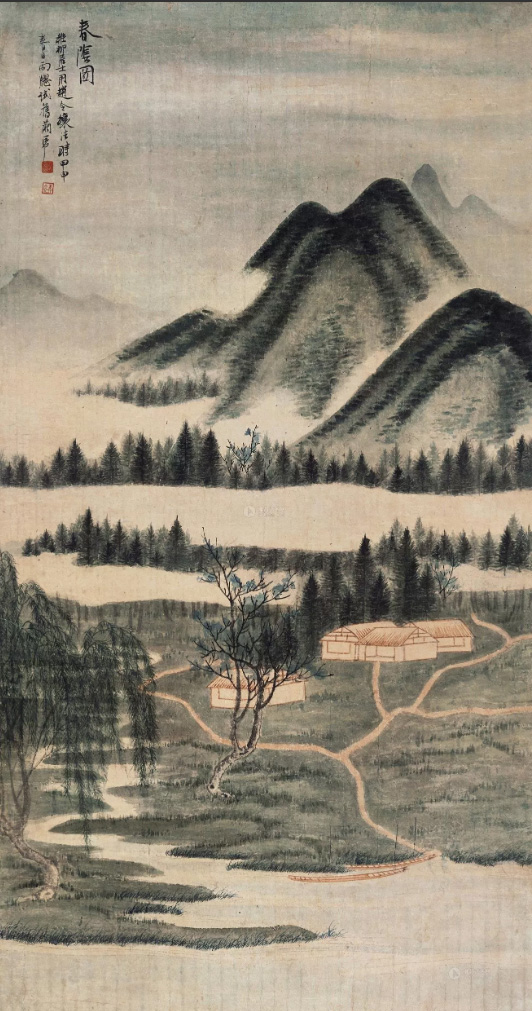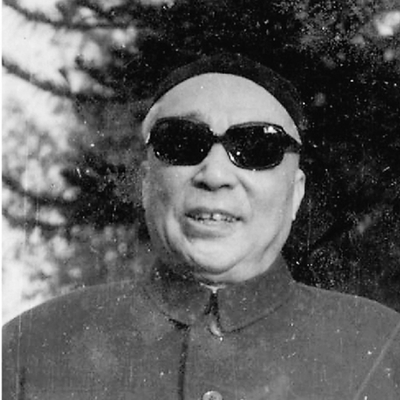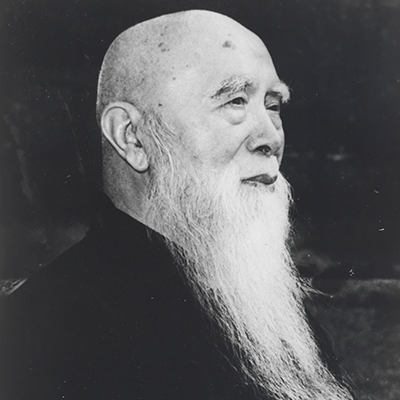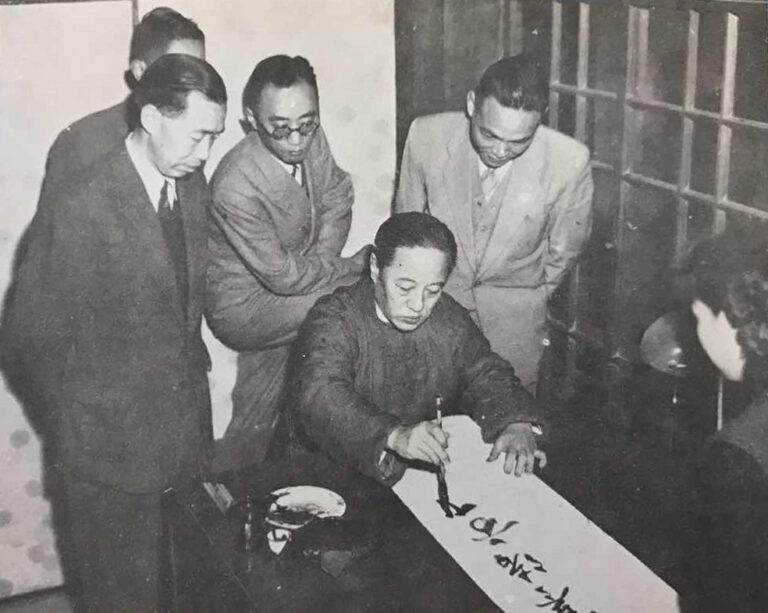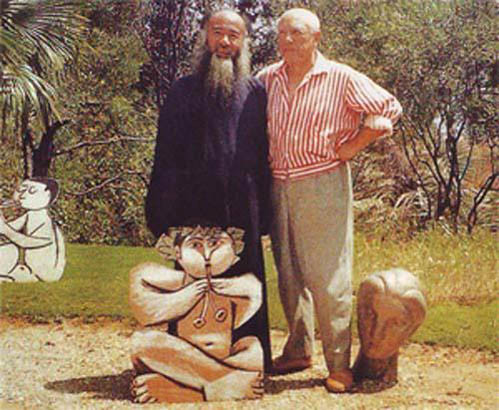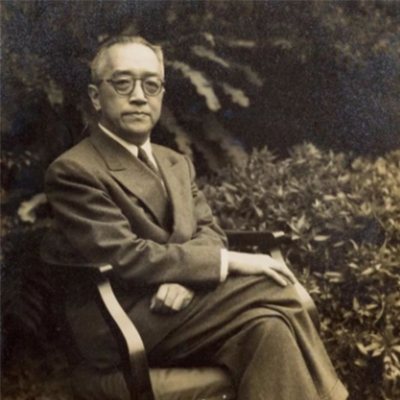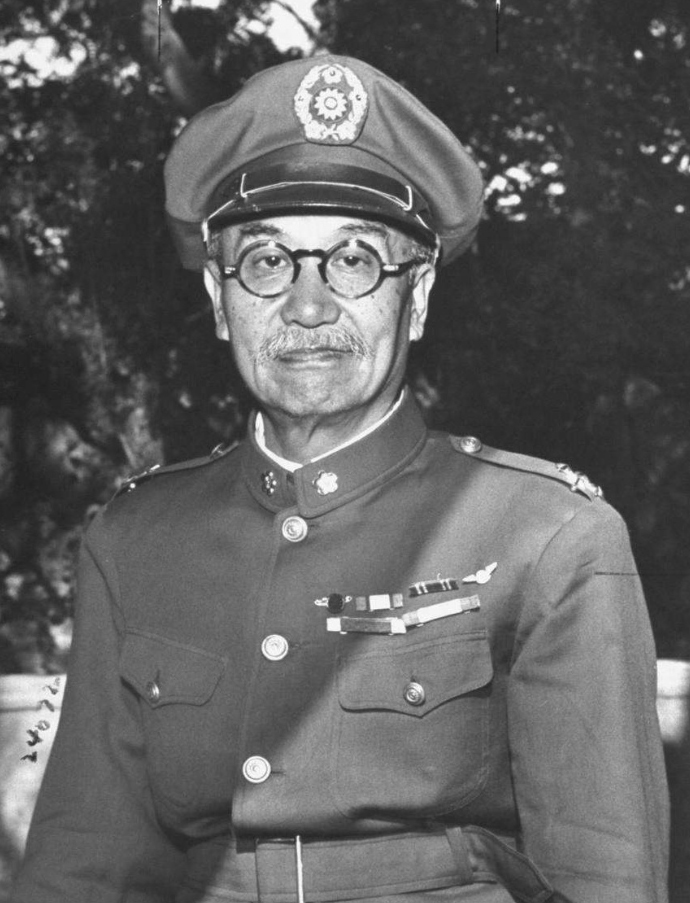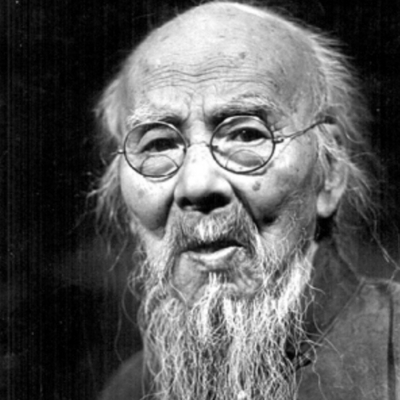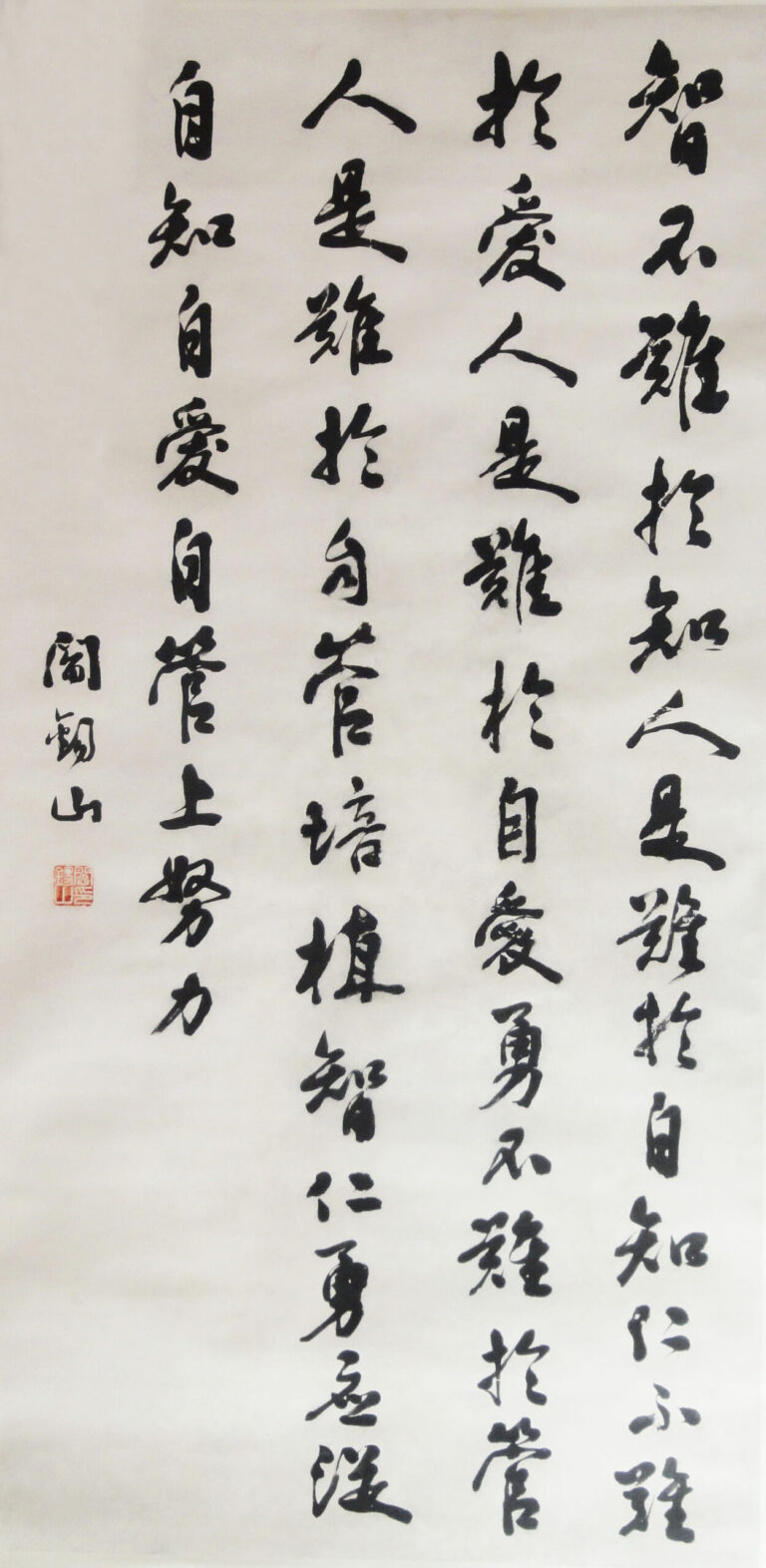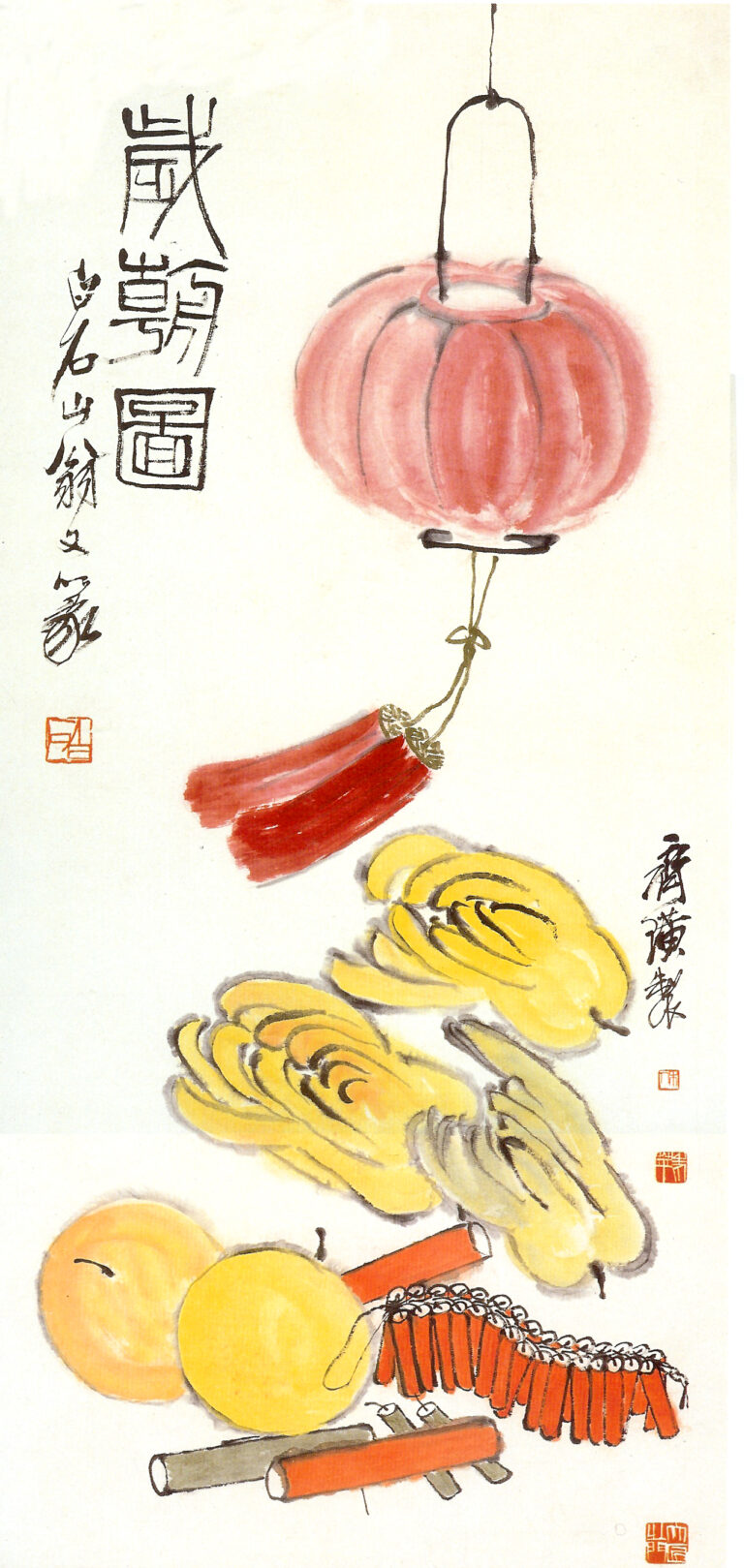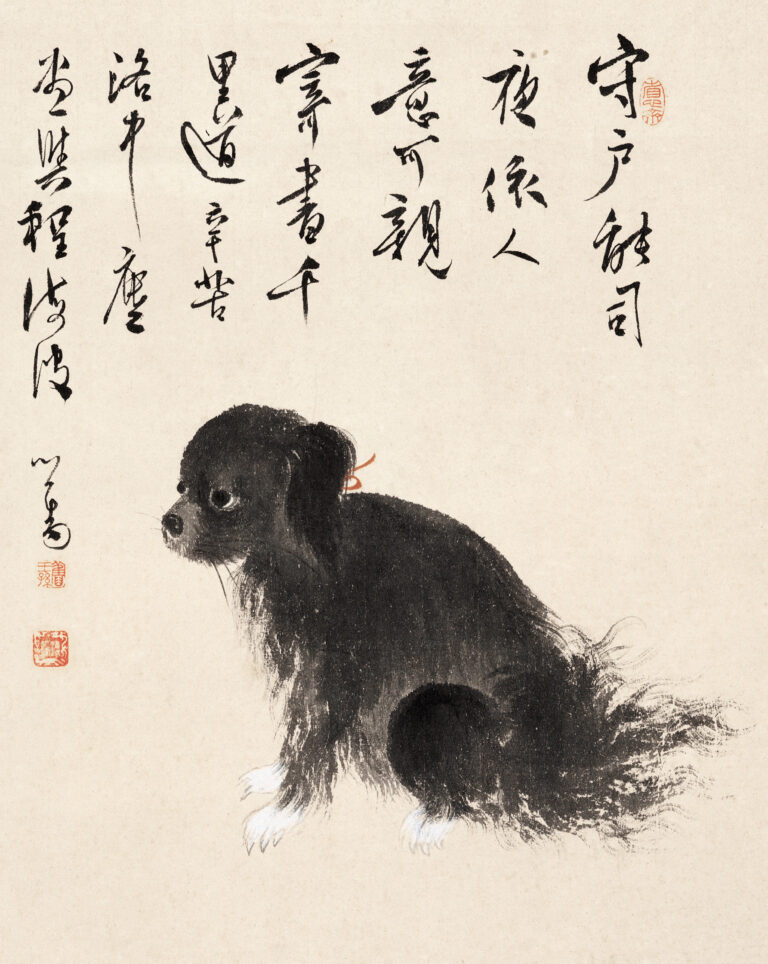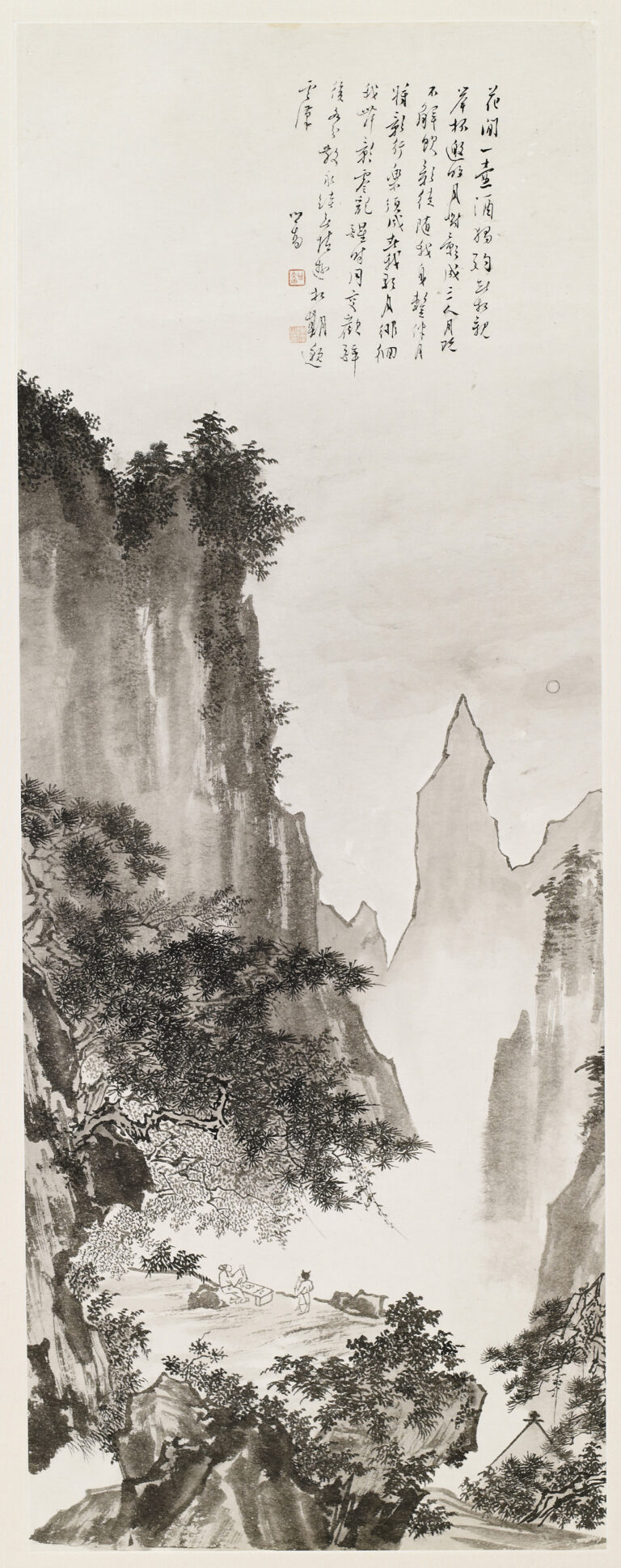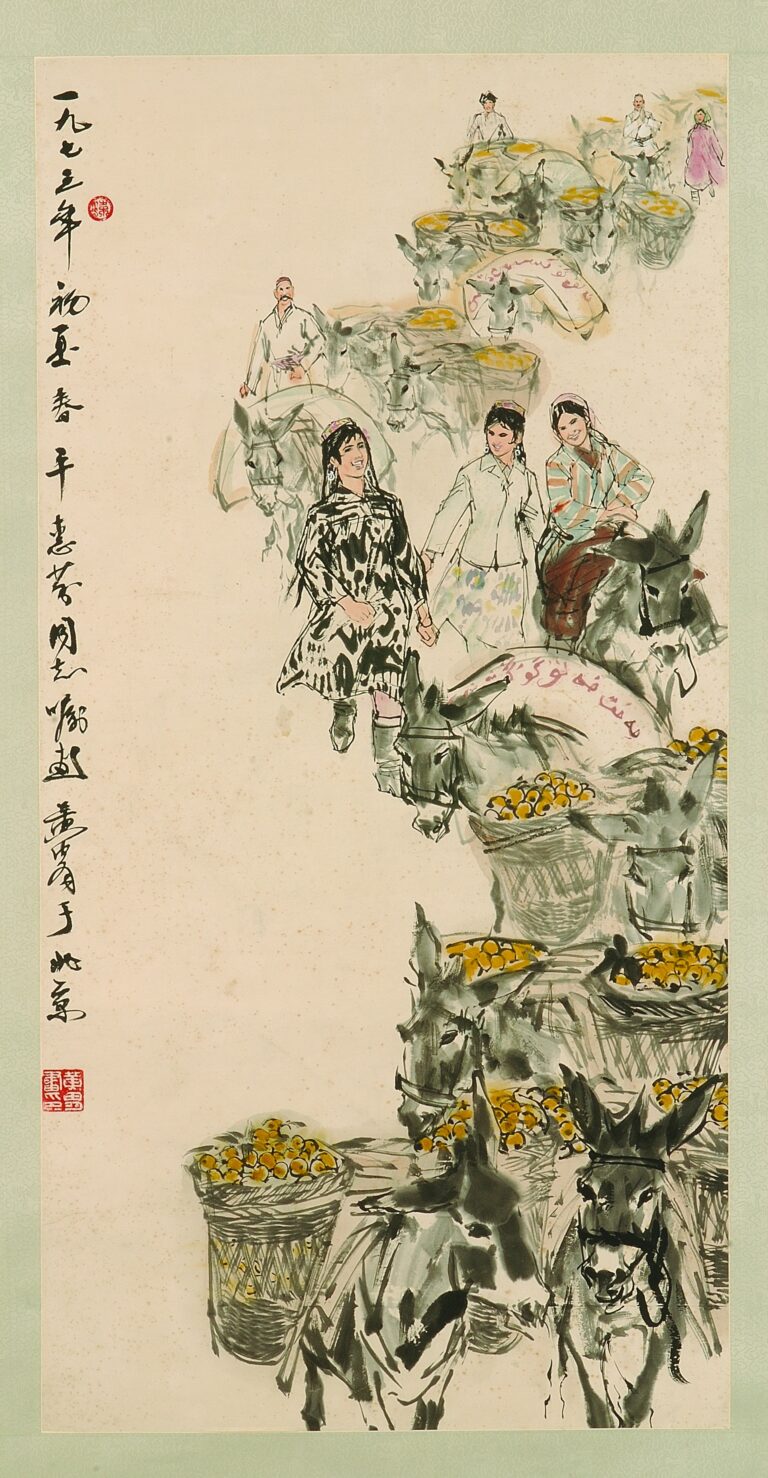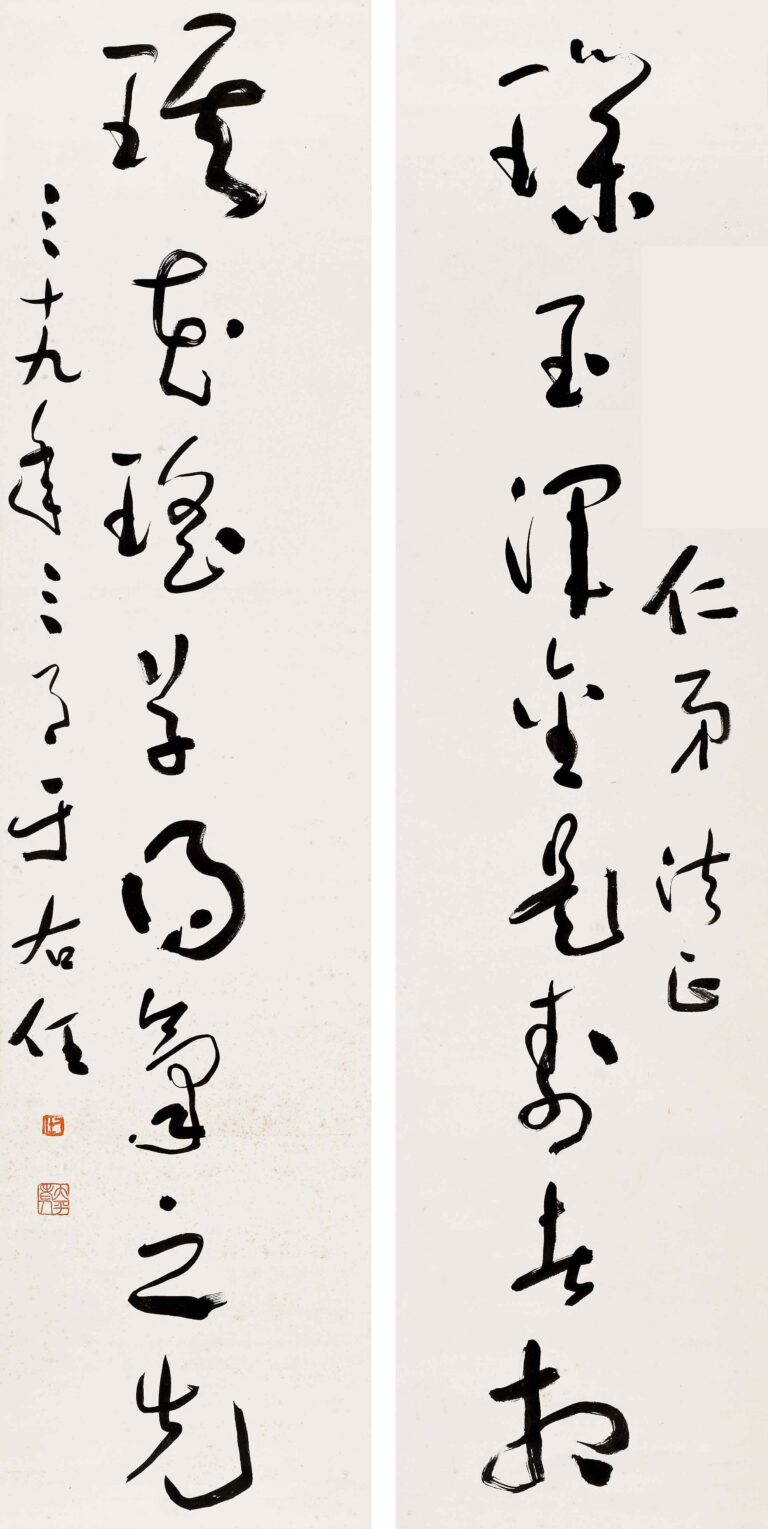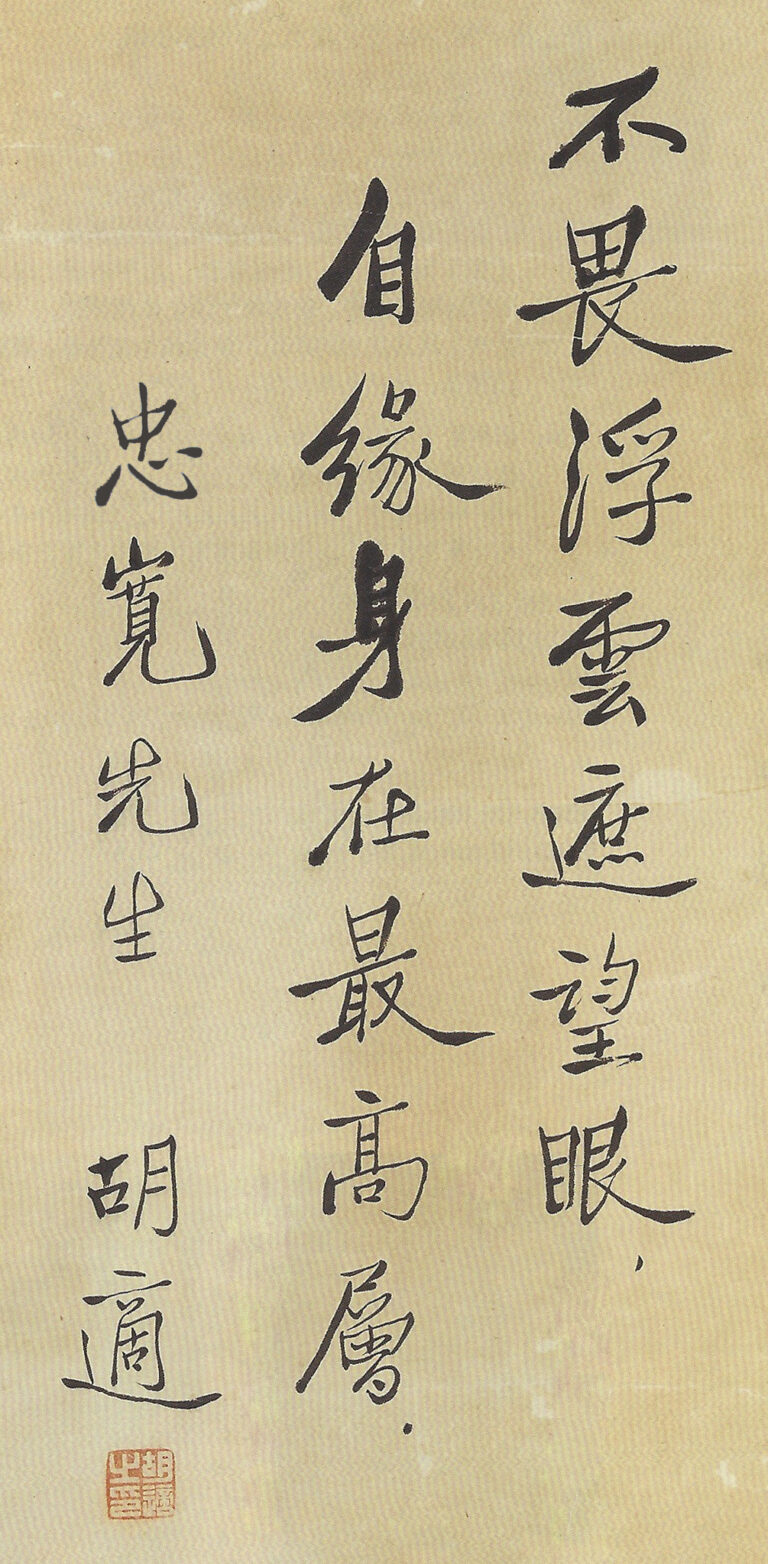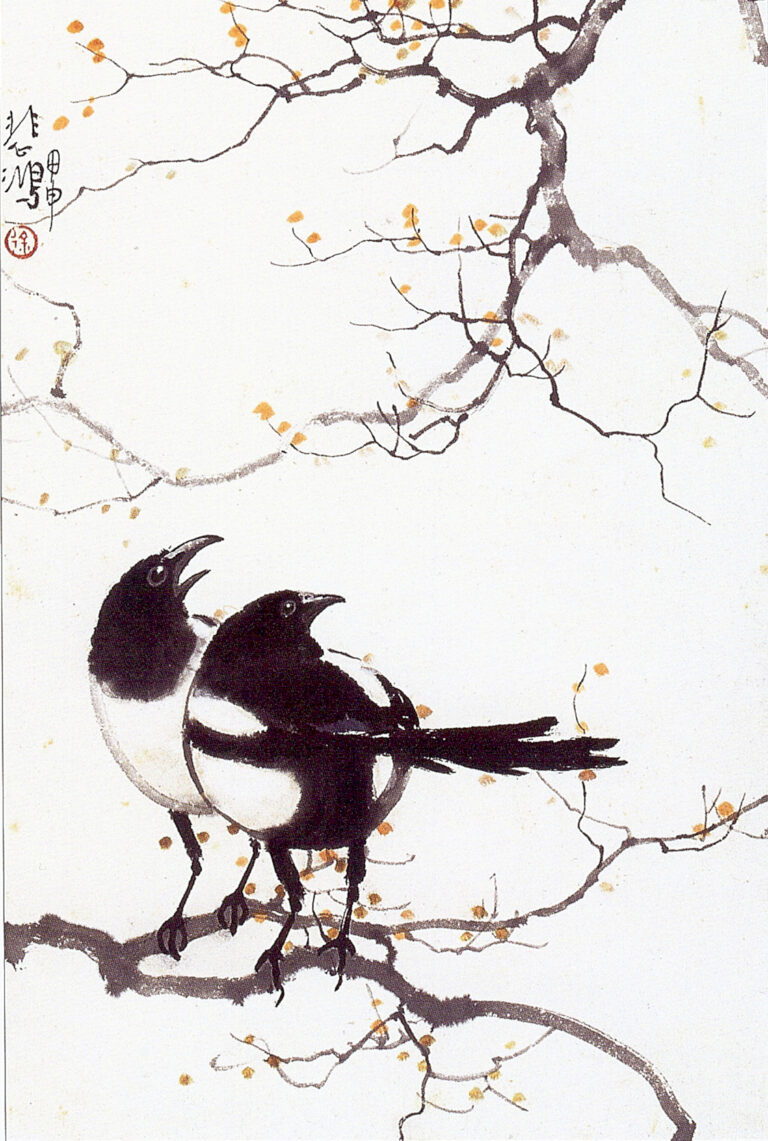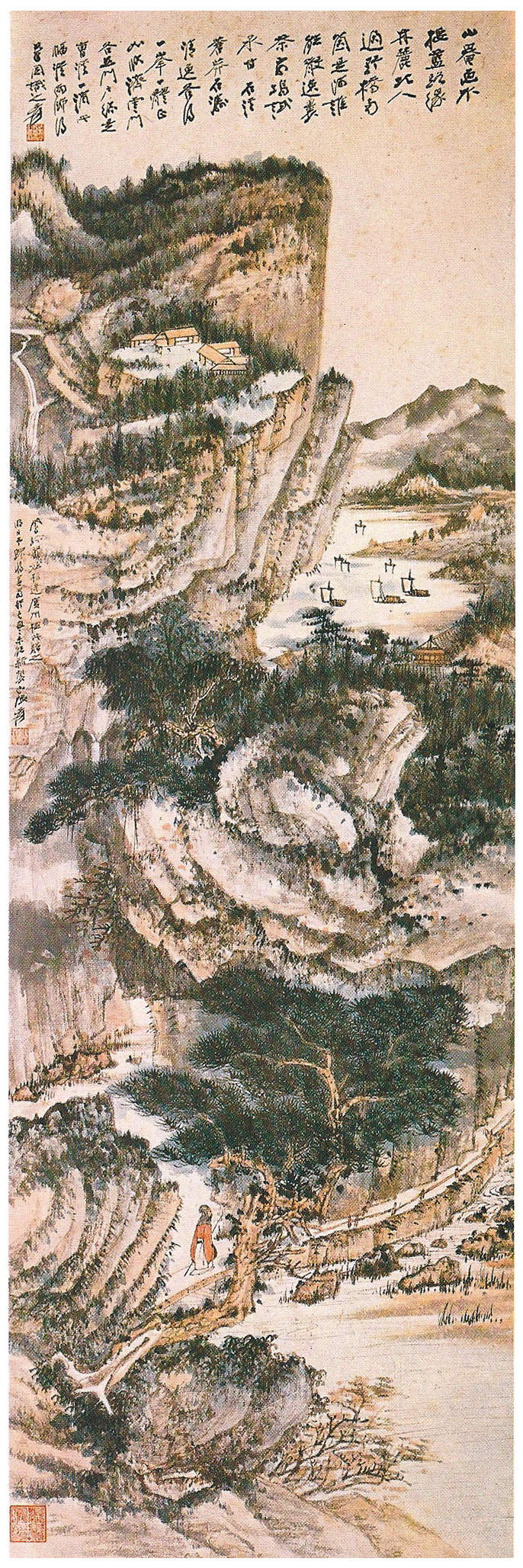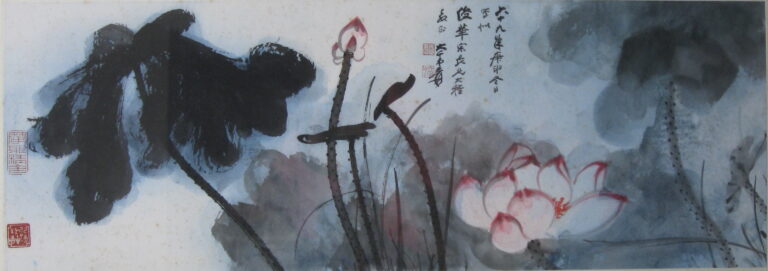1. Xie Zhiliu's boyhood: the Cultivation of Family Studies and the Ambition of Early Wisdom
Xie Zhiliu, formerly known as Zhi, with the characters Zhiliu and Zhuangmu, also known as Wuyi, has a wide range of room names. Born in Wujin, Jiangsu in 1910. At the age of six, he recited Tang poetry with his grandmother, and at the age of eight, he studied the Han Stele under the guidance of his elder brother Yucen, and practiced flower and bird painting through Keluo plate pictures. At the age of sixteen, he studied under Mr. Qian Mingshan, a famous artist from the south of the Yangtze River. He started painting landscapes at the age of 27. He traveled to and from Nanjing, Shanghai and other places to meet Shanzi and Zhang Daqian Kunzhong. After the age of 27, he moved to Chongqing and worked in the press and served as secretary on the right.
2. Trip to Dunhuang and academic start
At the age of 33, Xie Zhiliu was hired as a professor in the art department of Central University. In the same year, Zhang Daqian invited him to Dunhuang to investigate and organize the artistic heritage, and since then started the compilation of the "Dunhuang Grottoes Art Narrative". It was also during this period that he began to create character paintings. After the age of 37, he settled in Shanghai. After the establishment of New China, Xie Zhiliu worked for the Shanghai Cultural Relics Management Committee, specializing in the appraisal of calligraphy and painting, with outstanding achievements.
3. Cultural undertakings and institutional leadership
In 1955, Xie Zhiliu participated in the preparation of the Shanghai Chinese Academy of Painting. In 1961, he participated in the painting and Calligraphy appraisal group of the State Administration of Cultural Relics. In 1983, the Cultural Relics Bureau of the Ministry of Culture organized the national Ancient calligraphy and Painting Appraisal team, with Xie as the team leader, to conduct a systematic and comprehensive appraisal, examination and cataloging of ancient calligraphy and painting in the domestic collection, and to print catalogs and picture albums. It lasted for seven years and achieved great achievements.
In 1985, he was invited by the Metropolitan Museum of Art in New York to visit the United States for academic exchanges, and to appreciate the ancient Chinese paintings and calligraphy in the collections of the Nelson Museum of Art and the Cleveland Museum.
At 10 o'clock in the evening on June 1, 1997, Xie Zhiliu passed away in Shanghai. During his lifetime, he served as a director of the Chinese Artists Association, the executive director of the Chinese Calligraphers Association, the vice chairman of the Shanghai Branch of the American Association, the chairman of the Shanghai Branch of the Book Association, the consultant of the Shanghai Cultural Relics Management Committee, the consultant of the Shanghai Museum, and the consultant of Xiling Yinshe. He is well-known in the painting and calligraphy world.
4. Works and publishing results
He has written extensively throughout his life and has published:
- "Dunhuang Grottoes Art Narrative"
- "Miscellaneous Manuscripts of Jianyu"
- "Ink Painting"
- "The Complete Works of Liang Kai"
- "The Complete Works of Fan Kuanyan and Wengui"
- "The Complete Works of Zhao Ji"
And a variety of picture collections
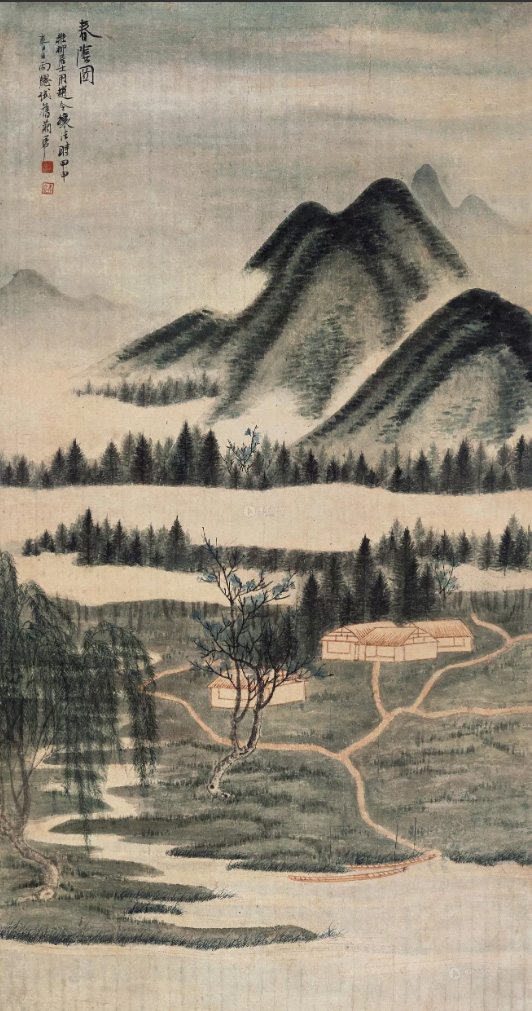
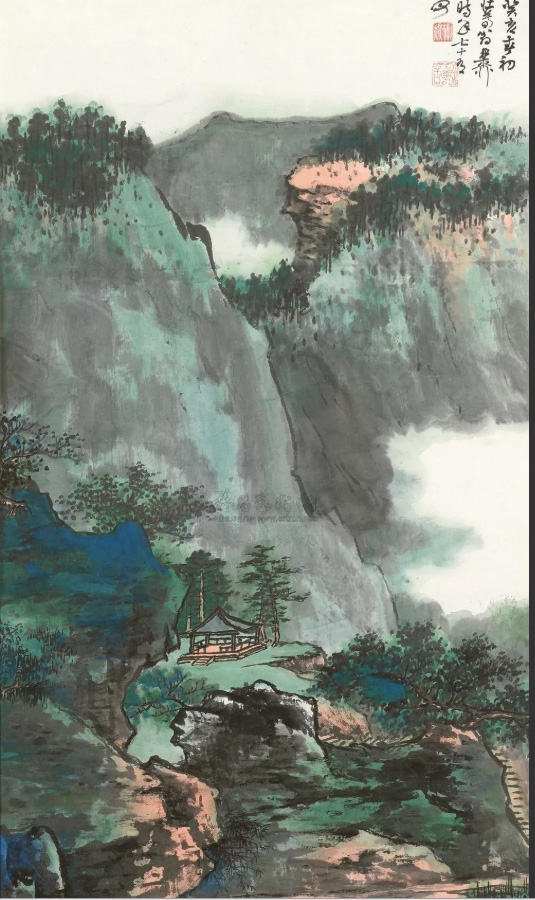
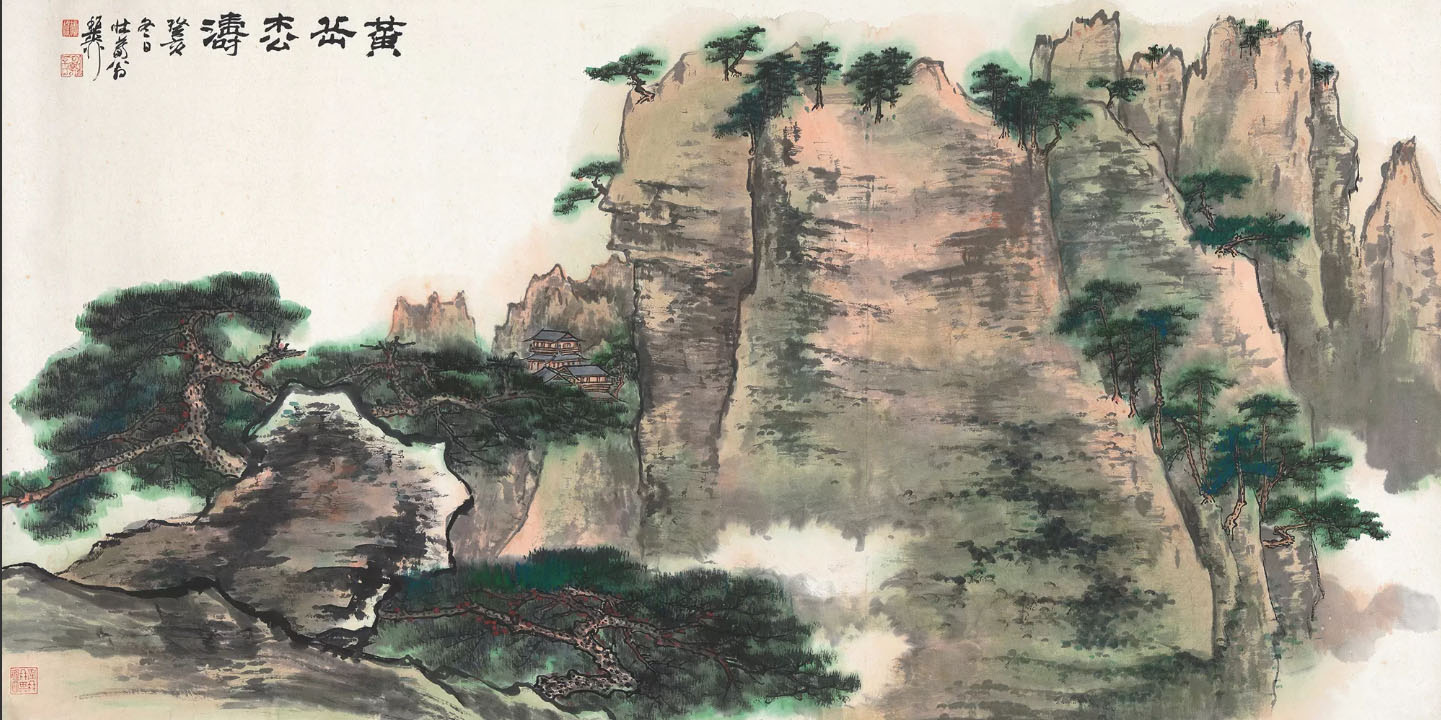
5. The development and essence of artistic style
Early stage
In his early years, he was deeply influenced by Chen Hongshou. The style of flower and bird painting is ancient and beautiful, elegant and profound, and the style is high and ancient.
Mid-stage
In landscape painting, Xie Zhiliu studied from the Song and Yuan dynasties, taking both the depth and power of the Tang Dynasties, especially Guo Xi, and taking the brushstrokes of Dong Yuan and Juran, especially Wang Yuan and Yan Wengui, forming a handsome, elegant, chic and ethereal Jiangnan landscape new style.Appearance.
The character paintings combine the characteristics of Lao Lian and Dunhuang murals to make their own unique tones. The painting of flowers and birds transitioned from the early Lao Lian style to the style of the two Song Dynasties, with neat and beautiful lines, elegant and elegant.
Later years
In his later years, he focused on Xu Xi's “Falling ink method", using ink as the ground, and painting flowers and landscapes in five colors. The pen and ink are mixed, and the charm is far-reaching.
6. Attainments in poetry and calligraphy
In addition to painting, Xie Zhiliu also works on poetry, inter-composed lyrics, elegant near Du Mu and Li Shangyin, with beautiful words and great recitation beauty.
In terms of calligraphy, Xie Zhiliu is especially good at cursing. In his early years, he started with the old lotus body, and then studied the Song people. In his later years, he fell in love with Zhang Xu's "Four Ancient Poems" of the Tang Dynasty. The style of the book is lush and mellow, and it is strange and dusty, and the aura of Gao Yi is seen in the pen and ink.
7. Seal art
Xie Zhiliu has many self-engraved seals. The style of the seals is simple and ancient, and the content is rich in poetry. The seals include: "Xie", "Xie Zhi", "Xie Zhi's Seal", "Xie Zhiliu", "Zhiliu", "Zhiliu Lay", "Xie Zhiliu", "Xie Zhiliu", "Xie Zhiliu", "Xie Zhiliu", "Xie Zhiliu", "Xie Zhiliu", "Xie Zhiliu", "Xie Zhiliu","Zhuangmu", "Zhuangmu Xie Zhiliu", "Zhuangmu Weng", "Chi Yan", "Chi Yanju", "Chi Yan Caotang", "Yan Baiyi", "Wuyi", "Fish Drink", "Fish Drink Father", "Yuyin and Raccoon Hall", "Diaoxiao Pavilion", "Juluyuan", "Zhuangmuzhai", "Zhuangmutang Calligraphy and Painting", "Kunazhai", "Kuzhai Luomo", "Zhuangzhai", "Chishanglou", "Yasu Room", etc..
8. Introduction to representative works handed down from generation to generation
The following introduction is part of Xie Zhiliu's representative works, which are cherished by future generations of collectors:
- "Running Script Banner"
The handwriting is steady, the rules and regulations are rigorous, and the whole picture has a simple and elegant atmosphere, demonstrating its academic rigor and bookishness. - "Self-written Poetry Manuscript"
The five-character ancient poem from the book has a strong pen, and the flowing clouds and water are full of bookish feelings. - "Plum and Bamboo Sketches"
The light ink is freehand, quiet and refined, reflecting its high-standard and self-disciplined style. - "Su Shu Lou Ji"
Taking running script from the meaning of Susushulou, the structure is rigorous and the strokes are calm, which shows his open-minded mind in his later years.
9. Cultural mission and artistic significance
As an artist, connoisseur and guardian of culture, Xie Zhiliu closely integrates his personal painting and calligraphy creation with the national cultural cause. He once said:"Academics should be the life of the nation, and culture should be the soul of the country. 」 This belief permeates his paintings and discussions, and it has also become a valuable legacy for future generations.
10. Conclusion and sincere invitation: Collecting the cultural style in Xie Zhiliu's pen and ink
Xie Zhiliu is not only an important artist in the Chinese painting scene in the 20th century, but also the guardian of cultural heritage. His calligraphy and painting works-from pen and ink to poetry, from style to charm-all exude a kind of warm and firm power, enough to enlighten future generations.Dehuatang sincerely invites you to collect Xie Zhiliu's fine paintings and calligraphy, and feel the affection and style of this master of art between pen and ink. We provide professional calligraphy and painting appraisal and high-price acquisition services, and we are willing to work with you to protect and inherit the endless brilliance of this cultural giant.
If you need to know more, please feel free to call or contact online, let us witness the eternal cultural style of Xie Zhiliu's pen and ink.
Portfolio

